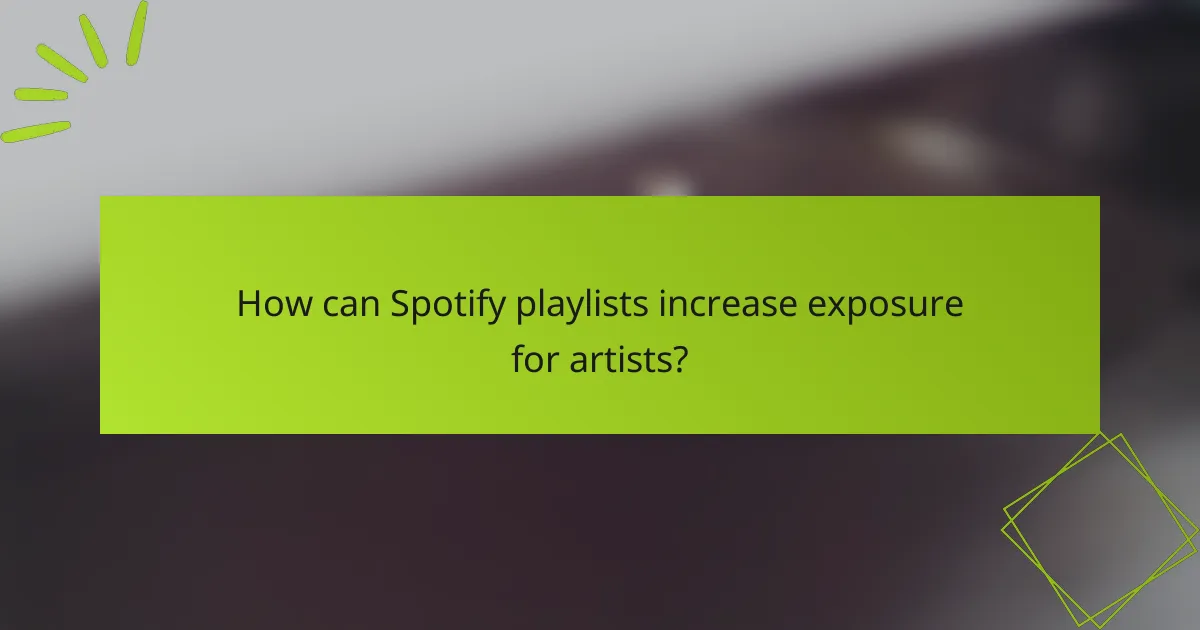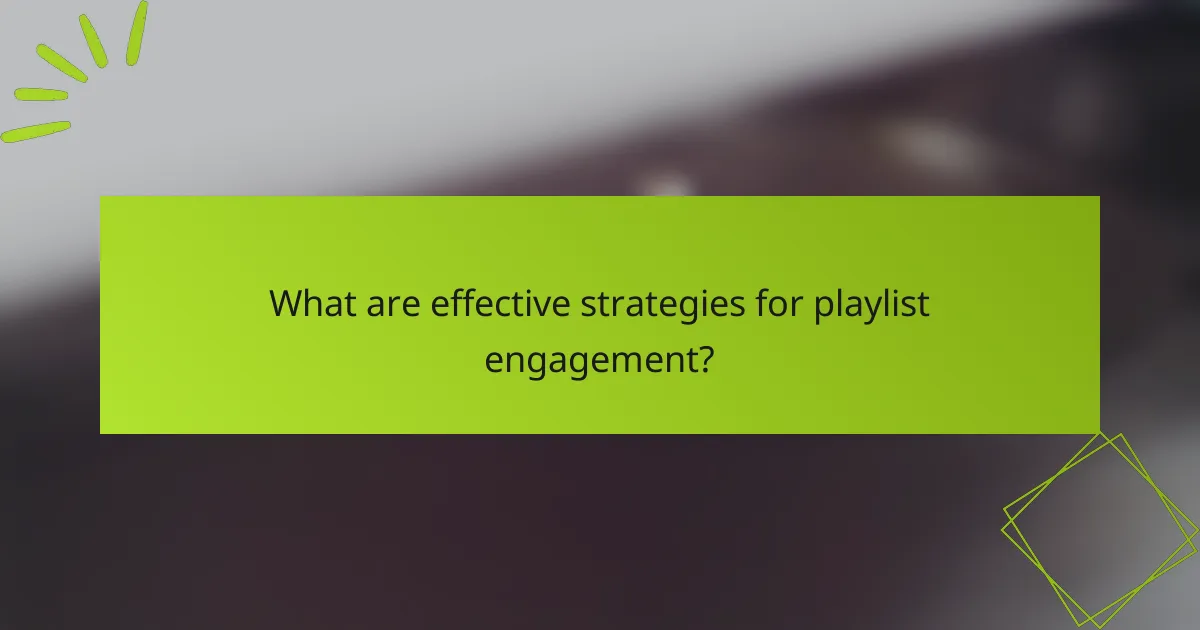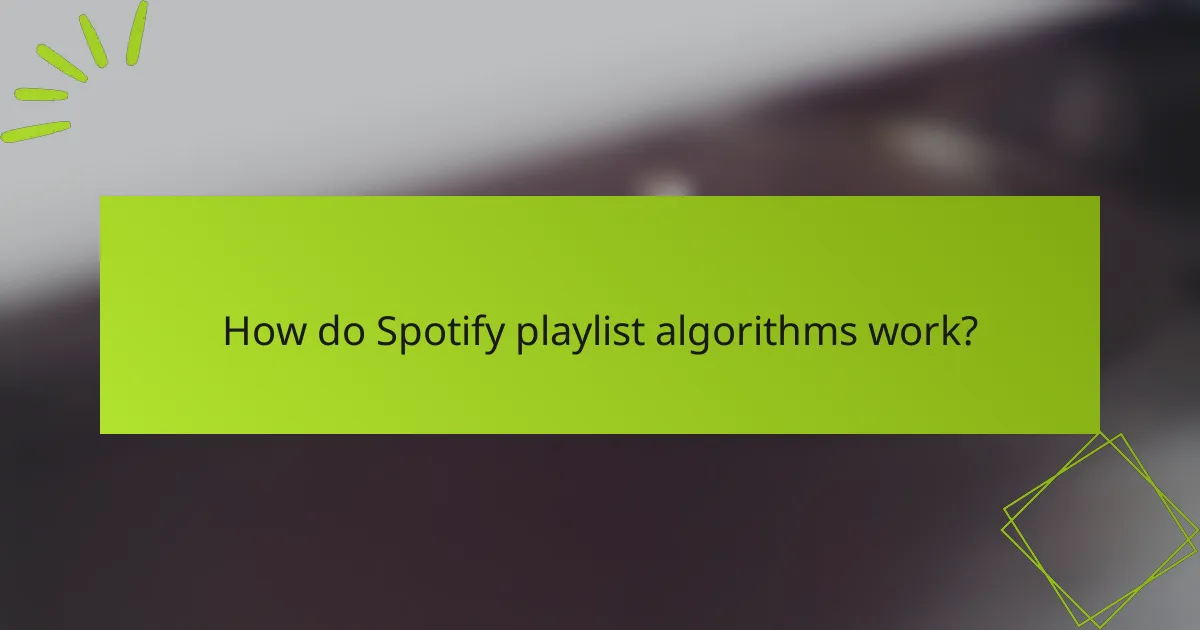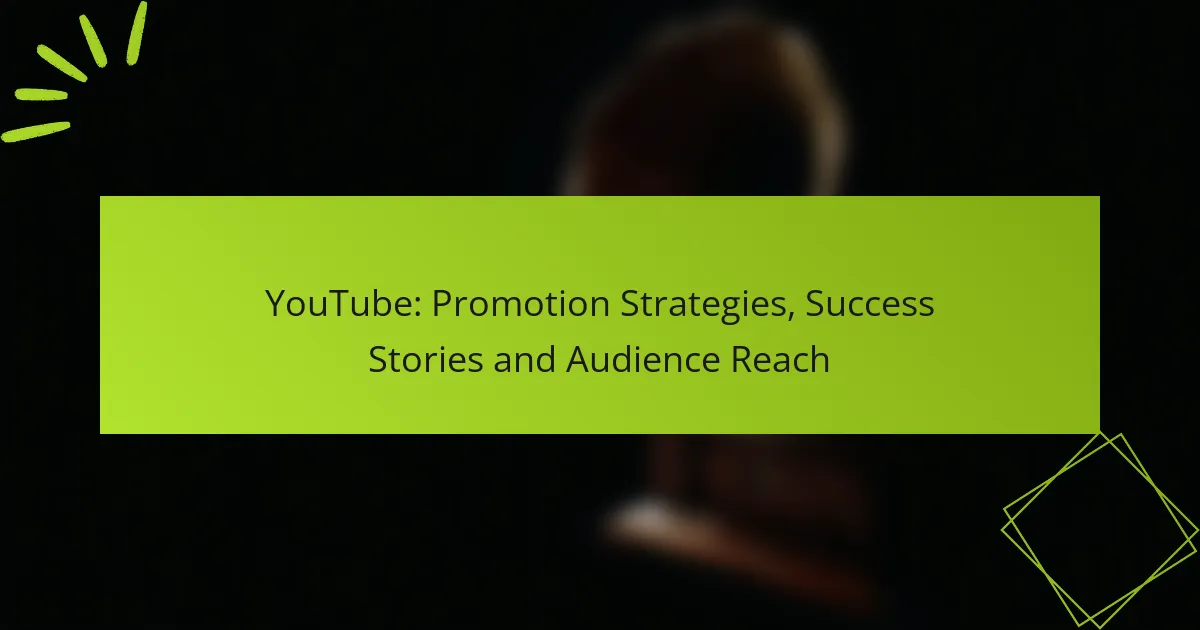Spotify playlists serve as powerful tools for artists to amplify their exposure, reaching wider audiences and boosting engagement through increased streams and followers. By implementing effective strategies such as creating compelling content and fostering listener interaction, artists can enhance their presence on the platform. Understanding the roles of top curators—ranging from independent creators to major label influencers—is crucial for navigating the landscape of music discovery and maximizing exposure.

How can Spotify playlists increase exposure for artists?
Spotify playlists can significantly enhance an artist’s exposure by placing their music in front of a larger audience. This increased visibility can lead to more streams, followers, and overall engagement with their music.
Playlist placements on Spotify’s algorithmic playlists
Algorithmic playlists, such as Discover Weekly and Release Radar, use user listening habits to curate personalized music selections. Getting featured on these playlists can expose an artist to thousands or even millions of potential listeners. To improve chances of placement, artists should focus on building a strong listener base and encouraging engagement through saves and shares.
Artists can also analyze their Spotify for Artists data to understand which tracks resonate most with listeners, helping them tailor future releases to fit audience preferences. Consistency in releasing music can also help maintain visibility within these playlists.
Collaborations with popular playlist curators
Collaborating with established playlist curators can provide artists with access to curated playlists that have dedicated followings. These curators often have the power to introduce new music to their audience, which can lead to increased streams and fan engagement. Researching and reaching out to curators who align with the artist’s genre can be an effective strategy.
When approaching curators, artists should present a compelling pitch that includes their music, a brief bio, and any notable achievements. Building relationships with curators over time can lead to more opportunities for playlist placements.
Utilizing social media to promote playlists
Social media platforms are vital for promoting Spotify playlists and engaging with fans. Artists can share links to their playlists, highlight featured tracks, and encourage followers to listen and share. Creating visually appealing posts or videos can capture attention and drive traffic to the playlists.
Additionally, artists should consider running targeted ads on platforms like Instagram and Facebook to reach potential listeners who may not be familiar with their music. Engaging with fans through comments and direct messages can also foster a loyal community around their playlists.
Engaging with Spotify’s editorial team
Connecting with Spotify’s editorial team can lead to placements in official playlists that have a broad reach. Artists can submit their music for consideration through Spotify for Artists, ensuring they provide all necessary information, including release dates and genre tags. A well-crafted submission can make a significant difference in getting noticed.
Building a strong online presence and maintaining a consistent release schedule can help artists stand out to the editorial team. Networking within the music industry and attending events can also facilitate connections that may lead to playlist placements.

What are effective strategies for playlist engagement?
Effective strategies for playlist engagement include creating appealing content, regularly updating playlists, and fostering listener interaction. These approaches help maintain listener interest and encourage sharing, ultimately increasing exposure.
Creating shareable playlist content
To create shareable playlist content, focus on themes that resonate with your target audience. Consider seasonal trends, moods, or specific events that can make your playlist more relatable and appealing.
Utilize eye-catching artwork and compelling descriptions to enhance the attractiveness of your playlists. Engaging visuals and well-crafted narratives can entice listeners to share your playlists across their social networks.
Regularly updating playlists to keep them fresh
Regular updates are crucial for maintaining listener interest in your playlists. Aim to refresh your playlists every few weeks by adding new tracks or rotating out less popular ones. This keeps the content dynamic and encourages repeat listens.
Consider seasonal updates or thematic changes to align with current events or trends. For instance, creating a summer playlist with upbeat tracks can attract listeners looking for summer vibes.
Encouraging listener interaction through social media
Encouraging interaction on social media can significantly boost engagement with your playlists. Ask listeners to share their favorite tracks or suggest additions to the playlist, creating a sense of community and involvement.
Utilize polls, questions, or contests on platforms like Instagram or Twitter to engage your audience. For example, you could run a contest where listeners submit their favorite songs for a chance to be featured in the next playlist update.

Who are the top Spotify playlist curators?
The top Spotify playlist curators include a mix of independent creators, major labels, and influencers who shape music discovery on the platform. Their influence can significantly impact an artist’s exposure and streaming numbers, making it essential to understand their roles and strategies.
Notable independent curators
Independent curators are individuals or small teams who create playlists based on personal taste and niche genres. They often have dedicated followings and can drive significant traffic to the tracks they feature. Engaging with these curators can be beneficial for emerging artists looking to reach specific audiences.
Examples of notable independent curators include platforms like “Indie Mono” and “Chillhop Music,” which focus on specific genres and styles. Artists should research and reach out to these curators to pitch their music, ensuring their submissions align with the curator’s aesthetic.
Major label curators and their impact
Major labels have dedicated teams that curate playlists aimed at maximizing exposure for their signed artists. These playlists often have large followings and can significantly boost an artist’s visibility on Spotify. Being featured on a major label playlist can lead to increased streams and new listener engagement.
Labels like Universal Music and Sony Music curate playlists such as “Today’s Top Hits” and “RapCaviar,” which are among the most followed on the platform. Artists should consider collaborating with label representatives to secure placements on these influential playlists.
Influencers who curate playlists
Influencers with a strong social media presence often curate playlists that reflect their personal brand and musical preferences. Their playlists can attract a wide audience, making them valuable for artists seeking to tap into new fan bases. Collaborating with these influencers can enhance an artist’s reach and credibility.
Examples include popular YouTube and TikTok personalities who share their favorite tracks through Spotify playlists. Artists should identify relevant influencers in their genre and consider partnerships or promotional strategies to gain playlist placements and increase exposure.

What criteria should be considered for playlist selection?
When selecting playlists for exposure, consider genre relevance, audience alignment, curator influence, and engagement metrics. These factors help ensure that your music reaches the right listeners and maximizes its impact.
Genre relevance and audience alignment
Choosing playlists that match your music’s genre is crucial for effective exposure. Playlists should cater to audiences that are already interested in your style, increasing the likelihood of engagement and positive reception.
Research the playlists to understand their typical sound and the demographics of their listeners. For example, if your music is indie rock, target playlists that feature similar artists and styles to attract listeners who appreciate that genre.
Curator’s follower count and engagement rates
The curator’s follower count can indicate the potential reach of your music. A playlist with thousands of followers may provide more exposure than one with only a few hundred, but engagement rates are equally important.
Look for curators who not only have a large following but also high engagement metrics, such as likes, shares, and comments on their playlists. A curator with a smaller but more engaged audience can often yield better results than one with a larger, less interactive following.

How do Spotify playlist algorithms work?
Spotify’s playlist algorithms analyze user behavior and preferences to curate personalized music recommendations. They utilize a combination of data points, including listening history, song attributes, and user interactions to determine which tracks to feature in playlists.
Understanding Spotify’s recommendation system
Spotify’s recommendation system relies on machine learning models that process vast amounts of data to identify patterns in user listening habits. Key factors include the frequency of song plays, skips, and saves, as well as the overall popularity of tracks among similar users. This system aims to enhance user experience by suggesting music that aligns with individual tastes.
For example, if a user frequently listens to indie rock, the algorithm will prioritize similar genres and artists in their recommended playlists. The more a user interacts with the platform, the better the algorithm becomes at tailoring suggestions.
Importance of user engagement metrics
User engagement metrics are crucial for the effectiveness of Spotify’s playlist algorithms. Metrics such as play counts, skips, shares, and saves provide insights into how well a song resonates with listeners. High engagement often leads to increased visibility on playlists, while low engagement can result in a track being deprioritized.
Artists and marketers should focus on strategies to boost engagement, such as promoting songs through social media or collaborating with influencers. Regularly analyzing engagement data can help identify trends and inform future promotional efforts, ensuring that music remains relevant and appealing to listeners.

What are common mistakes to avoid with Spotify playlists?
Common mistakes with Spotify playlists include failing to update them regularly, neglecting audience engagement, and not promoting them effectively. Avoiding these pitfalls can significantly enhance your playlist’s visibility and listener interaction.
Neglecting playlist updates
Regularly updating your Spotify playlists is crucial for maintaining listener interest and engagement. Playlists that remain static can lead to decreased plays and follower counts, as listeners may seek fresh content elsewhere.
Consider updating your playlists every few weeks or monthly, depending on the genre and audience preferences. Adding new tracks, removing underperforming ones, or creating themed updates can keep your playlist dynamic and appealing.
To manage updates effectively, set reminders or use scheduling tools to ensure your playlists evolve with trends and listener feedback. This proactive approach can help retain and grow your audience over time.



